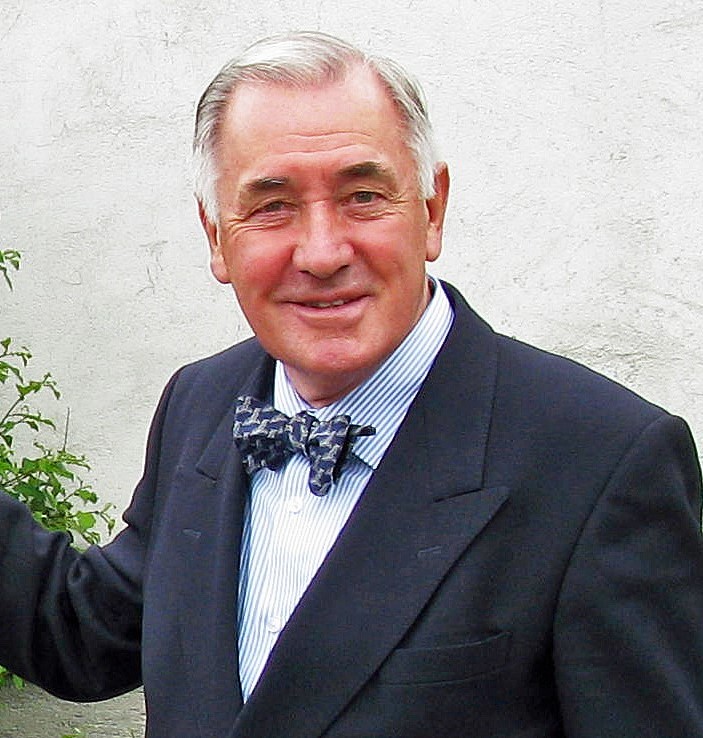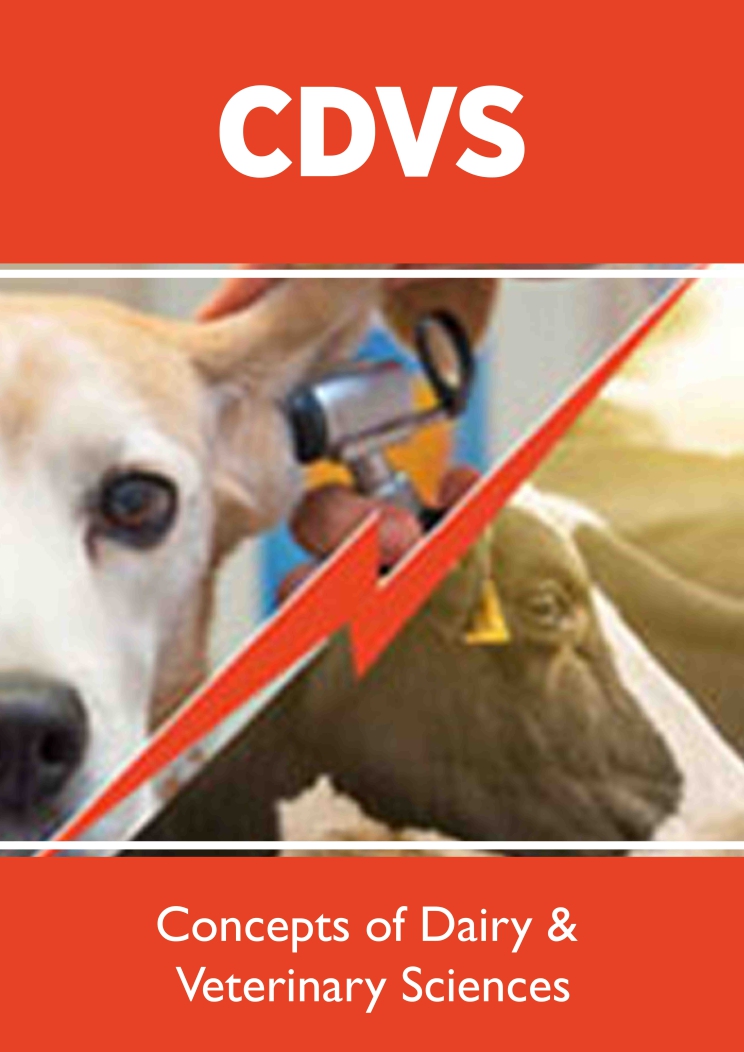
Lupine Publishers Group
Lupine Publishers
Menu
ISSN: 2637-4749
Short Communication(ISSN: 2637-4749) 
Importance of Cooling Holstein Cows During the Dry Period in Summer Months Volume 2 - Issue 2
Leonel Avendaño Reyes*
- Instituto de Ciencias Agrícolas, Universidad Autónoma de Baja California, Mexico
Received: February 15, 2019; Published: February 25, 2019
Corresponding author: Leonel Avendaño Reyes, Instituto de Ciencias Agrícolas, Universidad Autónoma de Baja California, Mexico
DOI: 10.32474/CDVS.2019.02.000137
Short Communication
Arid and semi-arid regions of the world are characterized by extreme climatic conditions with very low rainfall availability. Livestock production systems located in these zones are threatened by very high ambient temperatures as well as feed scarcity, especially during summer months [1,2]. This scenario is predicted to be worsened because of Global Warming, which involves a projection of an annual increased in global surface temperature of about 3.7 to 4.8 °C by the year 2100 [3]. Holstein cows in hot environments can be at risk of heat stress, which affect their productivity and well-being. Feed intake is negatively affected by heat stress, leading to a reduction in milk production and quality, as well as depressed reproductive efficiency of Holstein cows and heifers. A common management practice is to apply artificial cooling to cows when they are lactating, that is, during the postpartum. However, the prepartum period is a stage that involves several important physiological mechanisms that will definitively impact on productive and reproductive efficiency postpartum. So, when heat stress is present in the dry period can provoke an endocrine imbalance, which means alterations of concentrations of several hormones related to essential metabolic processes which are associated to postpartum Holstein cow productivity and health [4]. Therefore, cooling since the dry period of the cow must be identified as part of the total cooling period of a lactating cow.
The reduction of dry matter intake that takes place in dry cows because of the heat stress occurs in a lesser degree compared with producing cows. During the dry period, high ambient temperatures may activate mammary gland involution along with apoptosis and autophagy, decreased amount of mammary epithelial cells can finally cause drop in milk production [5]. Since fetal growth exerts a lower energy demand than lactation, heat stress has little impact on adipose tissue mobilization and glucose clearance in dry cows [6]. On the other hand, heat stress dry cows experience more protein mobilization possibly to support the fast fetal growth that occurs during late lactation.
Heat stress during late gestation stage exerts a strong effect on milk production of the subsequent lactation. When a cooling system is used to improve the cow´s comfort during the entire dry period, cooled cows produced about 4kg/d of milk more than cows with no cooling during the dry period. This positive effect on milk yield of cooled continues during the complete lactation, suggesting an enhanced mammary function rather than the metabolic related galactopoietic effect [7]. In part, this positive effect of cooling dry cows with spray and fans is also due to the reduction of body temperature in almost 0.5 °C and respiration frequency in around 20 breaths/min, which positively impact the subsequent lactation milk production [1,5]. During the dry period, the humoral immune response is also suppressed when heat stress is present. It was demonstrated that production of IgG was decreased during late gestation and early lactation in cows with no protection against hot temperatures during summer months. In addition, do Amaral et al. [8] found that the neonate immunity was depressed by prepartum heat stress because of their low ability to destroy pathogens relative to those from cows cooled during early lactation.
Comparing with multiparous cows, late gestation cooling of nulliparous heifers has received few attention, so that small number of publications are available on this topic. In general, prepartum cooling of heifers have shown less advantages to subsequent lactation compared to productive responses from applying water combined with forced ventilation during summer to multiparous cows [9].
It is important to recognized that heat stress also affects dry cows and this condition is frequently overlooked by dairy managers, therefore the cow’s subsequent performance is significantlydecreased [10]. To reduce the negative impact of heat stress on dry cows, adequate cooling should be applied during the complete dry period.
References
- Avendaño-Reyes L, Álvarez-Valenzuela FD, Correa-Calderón A, Saucedo JS, Robinson PH, et al. (2006) Effect of cooling Holstein cows during the dry period on postpartum performance under heat stress conditions. Livest Sci 281: 2535-2547.
- Avendaño-Reyes L (2012) Heat stress management for milk production in arid zones. Chapter 9: pp. 165-184. In: Narongsak Chaiyabutr (Eds.), Milk Production - An Up-To-Date Overview of Animal Nutrition. Management and Health, pp. 394
- Pachauri RK, Meyer LA (2014) Climate Change 2014: Synthesis report. Intergovernmental Panel on Climate Change. Contribution of Working Groups I, II and III to the 5th Assessment Report of the Intergovernmental Panel on Climate Change. IPCC, Geneva, Switzerland, pp. 151.
- Thompson IM, Dahl GE (2011) Dry-period seasonal effects on the subsequent lactation. Prof Anim Sci 28: 628-631.
- Tao S, Thompson IM, Monteiro AP, Hayen MJ, Dahl GE (2012) Effects of cooling heat-stressed dairy cows during the dry period on insulin response. J Dairy Sci 95(9): 5035-5046.
- Lamp O, Derno M, Otten W, Mielenz M, Nurnberg G, et al. (2015) Metabolic heat stress adaption in transition cows: differences in macronutrient oxidation between late-gestating and early-lactating German Holstein dairy cows. PLOS ONE 10: e0125264
- Tao S, Bubolz JW, do Amaral BC, Thompson IM, Hayen MJ, et al. (2011) Effect of heat stress during the dry period on mammary gland development. J Dairy Sci 94(12): 5976-5986.
- do Amaral BC, Connor EE, Tao S, Hayen MJ, Bubolz JW, et al. (2011) Heat stress abatement during the dry period influences metabolic gene expression and improves immune status in the transition period of dairy cows. J Dairy Sci 94(1): 86-96.
- Avendaño-Reyes L, Mejía-Lastra AJ, Vicente-Pérez A, Macías-Cruz U, Correa-Calderón A, et al. (2019) Cooling Holstein cows and heifers during before calving during summer: colostrum and milk quality. International Society of Animal Higiene 2019 Annual Meeting, Poland (in press).
- Karimi MT, Ghorbani GR, Kargar S, Drackley JK (2015) Late-gestation heat stress abatement on performance and behavior of Holstein dairy cows. J Dairy Sci 98(10): 6865-6875.

Top Editors
-

Mark E Smith
Bio chemistry
University of Texas Medical Branch, USA -

Lawrence A Presley
Department of Criminal Justice
Liberty University, USA -

Thomas W Miller
Department of Psychiatry
University of Kentucky, USA -

Gjumrakch Aliev
Department of Medicine
Gally International Biomedical Research & Consulting LLC, USA -

Christopher Bryant
Department of Urbanisation and Agricultural
Montreal university, USA -

Robert William Frare
Oral & Maxillofacial Pathology
New York University, USA -

Rudolph Modesto Navari
Gastroenterology and Hepatology
University of Alabama, UK -

Andrew Hague
Department of Medicine
Universities of Bradford, UK -

George Gregory Buttigieg
Maltese College of Obstetrics and Gynaecology, Europe -

Chen-Hsiung Yeh
Oncology
Circulogene Theranostics, England -
.png)
Emilio Bucio-Carrillo
Radiation Chemistry
National University of Mexico, USA -
.jpg)
Casey J Grenier
Analytical Chemistry
Wentworth Institute of Technology, USA -
Hany Atalah
Minimally Invasive Surgery
Mercer University school of Medicine, USA -

Abu-Hussein Muhamad
Pediatric Dentistry
University of Athens , Greece

The annual scholar awards from Lupine Publishers honor a selected number Read More...




